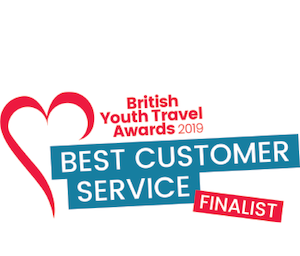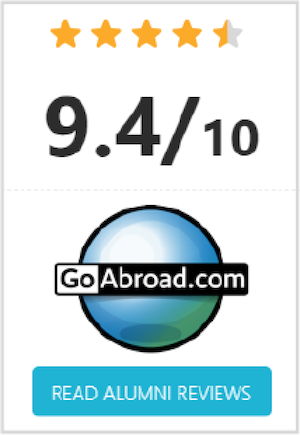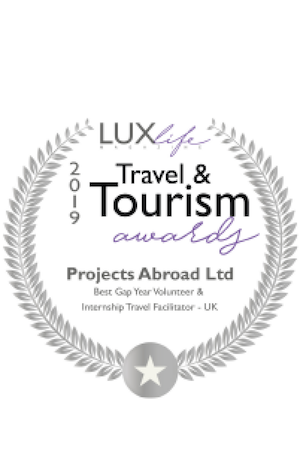At a glance
- Help protect threatened wildlife in the African savannah. Work with conservation experts and preserve biodiversity for future generations.
- Work with the endangered Rothschild Giraffe and lions in the conservancy. Help stem the decline of their populations in Soysambu.
- You will live at the ranch house on the conservancy alongside other volunteers. This is the ultimate African Adventure!
Is wildlife conservation volunteering in Kenya right for me?
This project is great for anyone who is passionate about wildlife conservation in Africa, and has an interest in working with lions and giraffes or the great outdoors. It’s also a fantastic opportunity to have an off-the-beaten-track adventure.
Pursuing a career in conservation? This project offers a perfect balance between research and doing hands-on work. You will learn directly from conservation experts, giving you a good all-round experience to add to your CV. You can use this experience in interviews and talk about what you learned and the challenges you faced.
This project runs year-round, and you can join from a minimum of one week. However, we recommend staying longer, as you’ll get to see and do much more.

What will I do on this project?
As an environmental volunteer on our Savannah Conservation Project, you’ll support the work of local conservationists to protect wildlife in the Soysambu Conservancy. Here are some of the tasks you can expect to do:

1
Research the Rothschild giraffe and other threatened animals in the savannah

2
Set up camera traps and study animal behaviour

3
Conduct community outreaches, tree planting and installing eco-stoves for communities

4
Remove invasive species

5
Maintain waterholes to ensure vital water access to wildlife
Your work will be divided into five main categories:
Threatened species research
Our primary focuses are to:
- Research the ecology of the Rothschild's giraffe
- Monitor lion movement in relation to livestock
- Document lion population structure and interaction with other carnivores
We then share this knowledge with other reserves. This is pioneering research for giraffe and big cat conservation in Africa that could determine the fate of this species and subspecies, as lion populations fall and only a couple of thousand giraffes remain in the wild.
Our giraffe and lion conservation work in Kenya goes a long way in maintaining a habitat where the wild animals can flourish and breed in peace. It also allows for a better kind of interaction between humans, livestock, and wildlife.
Set up camera traps
As most animals, especially lions, are very active by night, camera traps help us study their natural habitats, behaviors, and movements. You will be involved in setting up these cameras around the reserve. This will also serve as the perfect way to do mammal inventory. Inventory helps measure the success of our efforts, when counting a populations’ potential growth. This is important for giraffe and big cat conservation
Community outreach
In addition to working in the reserve, you will also participate in a community outreach once a week on a Thursday. The outreach activities vary upon the needs of the community at the time. They could include:
- Teaching children about the importance of protecting the environment
- Playing sports like football
- Installing eco-stoves
Invasive plant removal
Alien plant species are a big problem in Kenya. They destroy endemic plants that provide a habitat for the local wildlife. You’ll help remove these plants. You’ll also help clear and maintain trails to make sure visitors don’t wander off the dedicated paths. This helps protect indigenous plants.
Maintaining natural water holes for animals
You will help maintain water holes and boreholes. This will ensure that water is constantly stored for the animals, and is vital to their survival during times of drought.
Where in Kenya will I work?
Soysambu
During your time in Kenya, you’ll be based at the Soysambu Conservancy.
The conservancy is located in the heart of the ancient, beautiful Great Rift Valley in Nakuru County. Soysambu is in the Kenya Wildlife Service’s list of endangered ecosystems. This is why we need volunteers to support the work of local conservationists in Kenya, and this particular wildlife conservation effort is the perfect opportunity.
You’ll live with other volunteers at the conservancy in a ranch house, which has been modified into dormitory-style accommodation. Dormitories are separated according to gender. The house has an outside area for activities and a spacious living area for relaxing or socialising. You can choose to have your meals indoors or outdoors, and relax after a long day’s work while admiring the spectacular views.
Please note that electricity is only available in the evenings when the solar power is used.
What is a typical day on this project like?
You usually work five days a week. Depending on the activities, you may be required to start earlier, finish later, or work over the weekend.
Work is divided up among all the volunteers using a weekly schedule. On a typical day you can expect to work from 8am to 12pm. Then, you will have a break with some time to eat, sleep, read and relax. After this, at around 2pm, you will go back out to work in the afternoon, when the heat starts to abate.
Workdays are usually split into physical and non-physical days, both of which are crucial for savanna conservation efforts. You’ll alternate between days for digging, cutting, and general physical labor. This is followed by days for collecting data, GPS mapping, and species research.
Evenings are spent cooking and eating, playing games, and preparing for the following day.
Trained local staff are on hand to supervise activities and provide support, and will accompany you wherever you go on the reserve. You will also be able to take part in workshops designed to teach you about different aspects of this Wildlife Conservation Project and the environment.
Since you will be sharing accommodation with your fellow volunteers, you will be able to spend your evenings and weekends getting to know each other better.

What are the aims of this conservation project in Kenya?
The aim for this project is to preserve the ecological well-being of the area and ensure the survival of precious wildlife species.
Kenya is well known for safaris and wild animals that can be seen roaming from the roadside. However, the human population continues to grow. There is an increasing threat of poaching, pollution, and damage caused by residential and commercial development. Reserves such as Soysambu create havens for savanna wildlife and allow wilderness areas to flourish.
With such a wide range of research and practical work being done at Soysambu, you’ll gain a new range of skills. You will also get an increased awareness of the African landscape, its animals, and their ecology.
Our major focus in Soysambu is our work with big cats and the conservation of the Rothschild’s Giraffe. Roughly 5% of the Rothschild Giraffe population live in Soysambu. The research we do is critical to ensuring that the species is able to thrive here.
We also strive to involve the local communities. At Soysambu, we work side-by-side with local communities. This includes running educational wildlife conservation programs and workshops in local schools. The goal is to share knowledge with children about the importance of protecting animals and the environment.
Join our African Savannah Conservation Project today, and become part of our long-term efforts to protect Kenya’s wildlife.

Management plans
We set out the aims and objectives of our projects in documents called Management Plans. We use them to properly plan the work you’ll do. They also help us measure and evaluate our achievements and impact each year.
Ultimately, our Management Plans help us make our projects better. This in turn means you get to be part of something that makes a real impact where it’s needed. Read more about our Management Plans.
Measuring our impact
Our projects work towards clear long-term goals, with specific annual objectives. Every volunteer and intern we send to these projects helps us work towards these goals, no matter how long they spend on our projects.
Every year we take a step back and look at how much progress we've made towards these goals. We put together a Global Impact Report, which documents our achievements. Find out more about the impact our global community of volunteers, interns and staff make, and read the latest report.
Food and accommodation
You'll stay at shared accommodation with other Projects Abroad volunteers in the reserve. This is a great way to get to know your fellow volunteers and share the experience of living in African savannah together.
The accommodation is safe, clean, and comfortable. Your programme fees include three meals a day.
Find out more about our accommodation.
Leisure activities and free time
Interning in Kenya is the perfect opportunity to explore this extraordinary country. With a vast array of activities, you’re sure to find plenty of ways to fill your evenings and weekends.
A trip to East Africa wouldn’t be complete without a safari. As you explore the savannahs, spot wildlife like elephants, lions, and even the endangered Rothschild’s giraffe.
Our projects are based in Nanyuki, which is known as the gateway to Mount Kenya. With this majestic mountain on your doorstep, it’s worth taking a day to hike around the base.
You can spend evenings at buzzing restaurants, listening to live music and trying local dishes. Kenya also has must-see markets, with bright textiles and hand-carved sculptures.
You can spend your free time exploring independently or traveling with a group. With so many volunteers and interns joining us throughout the year, you’re sure to make new friends and travel buddies during your trip.
Safety and staff support
Your safety and security is our prime concern. We have many procedures and systems to ensure you have the support you need to enjoy your trip with peace of mind. Our Projects Abroad staff are available 24 hours a day to help, and will be on hand to make sure you settle in well at your accommodation and placement. If you encounter any problems, they will be available to help at any time.
Find out more about safety and backup.
This placement is fully researched, safety audited, and risk assessed in accordance with the British Standard BS8848 for the Adventure Travel Sector.
Not quite what you’re looking for?
Take a look at the following pages where you'll find collections of similar projects:
Enquire Now
Our accreditations














































